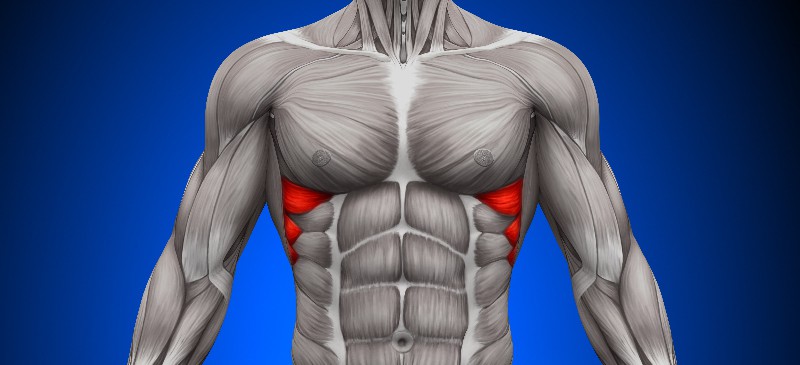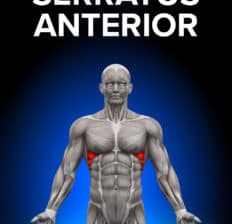This Dr. Axe content is medically reviewed or fact checked to ensure factually accurate information.
With strict editorial sourcing guidelines, we only link to academic research institutions, reputable media sites and, when research is available, medically peer-reviewed studies. Note that the numbers in parentheses (1, 2, etc.) are clickable links to these studies.
The information in our articles is NOT intended to replace a one-on-one relationship with a qualified health care professional and is not intended as medical advice.
This article is based on scientific evidence, written by experts and fact checked by our trained editorial staff. Note that the numbers in parentheses (1, 2, etc.) are clickable links to medically peer-reviewed studies.
Our team includes licensed nutritionists and dietitians, certified health education specialists, as well as certified strength and conditioning specialists, personal trainers and corrective exercise specialists. Our team aims to be not only thorough with its research, but also objective and unbiased.
The information in our articles is NOT intended to replace a one-on-one relationship with a qualified health care professional and is not intended as medical advice.
Serratus Anterior Exercises to Strengthen the Top of Your Abs
April 14, 2023

The serratus anterior? Huh?
I know, I know — it sounds like a dinosaur or maybe one of the zombies from “The Walking Dead,” but this small muscle is a forgotten powerhouse. A vital stabilizer for healthy shoulder mobility, it deserves our attention.
Take a second to reach your arms straight above your head into a big “morning” stretch and you will activate the serratus anterior muscle. I’m reminded each morning of the crucial role these little guys play in our balance, strength and posture as I run through my morning stretch routine.
I’m going to walk you through what the serratus anterior is — such as how it even helps your breathe! — as well as how to strengthen and stretch this important area.
What Is the Serratus Anterior?
Projecting outward are finger-like tentacles that originate from the first through eighth rib, wrapping intercostally around the outside of the rib cage. The muscle then inserts posteriorly into the anterior surface of the border of your scapula or “shoulder blades.”
The serratus anterior is broken down into three sections: superior, intermediate or medial, and inferior. When properly strengthened, it gives the look of an extension of the abdominals and increases the strength of your core.
The serratus anterior has a very important job in the pectoral girdle, both protracting the shoulder and rotating the scapula so the glenoid cavity moves “upward” superiorly and anchors the shoulder blade. When we protract our shoulders, we are abducting or moving away from the body. This works collaboratively with a more familiar muscle called the rhomboids on the posterior or dorsal side of the body.
The rhomboids are large muscles on each side of the upper back. If you raise your arms up in a “touchdown” motion and squeeze your shoulder blades (scapulae) together, you fire up and contract the rhomboids, which act as an antagonist to the serratus anterior muscle.
Another important function of this muscle is lifting the ribs as an accessory inspiratory muscle. Working hand and hand with the intercostal muscles, the serratus anterior helps open the chest and allows for deep breathing. Stop for a moment, take a big breath in and think of all of the amazing muscles that are at work to make that happen each time you inhale.
The intercostal and core abdominal muscles act to reduce the thoracic volume, while the serratus anterior and other muscles in the thoracic cavity help increase thoracic volume. If we flip the body over onto the posterior side, the superior serratus posterior muscles assist in increasing thoracic volume while the inferior assist in thoracic volume reduction.
Wow! That’s a lot going on every time we breathe.
The long thoracic nerve supplies the serratus anterior muscle via three spinal nerve roots, which cut through the clavicle area to the right of the brachial plexus. This innervation supplies from your fifth through seventh cervical spine and is important for the mobility of your neck.
Due the length of this nerve, it’s susceptible to injury via direct trauma, such as contact sports or blows to the upper torso.
In the case of this type of upper extremity injury and because of the limited pain management options for this type of injury, with the rise of opioid usage, physicians are utilizing a new ultrasound procedure. It’s called Ultrasound-Guided Serratus Anterior pain block and is a promising single injection procedure that is decreasing the need for opioids, while relieving the pain of the trauma to the rib cage.
This is a promising alternative for traumatic posterior rib fracture pain and is utilized in emergency departments.
The serratus anterior protects against neck pain and is sometimes called the “boxer” muscle. In reality, we use it in swimming, holding handstands or yoga poses, throwing a football, and even doing a push-up.
In Latin, serrare means to saw, and the serratus anterior muscle looks serrated against the ribs, projecting across the upper torso. Its movement within the shoulder joint enables the arm to move above 90 degrees.
Injury can occur due to overuse and repetitive movements, such as in swimming, heavy lifting or throwing a baseball. When overused, the muscle is subjected to mini muscle traumas that over time lead to strains, pain and tears.
The significance of this? The arm’s movement relies on a series of muscles to anchor the shoulder blade to the body.
Injury prevention tips:
Warming up your muscles for just a few minutes before any activity is important. It increases the muscle temperature and allows for an increase in muscle pliability.
Follow this with a stretch, holding for about 10 seconds, to allow for improved muscle performance.
Finally, make sure to cool down your muscles by slowing down the exercises before completely stopping. This helps prevent dizziness, fainting or nausea and also helps remove the lactic acid from the muscles, allowing the blood that pools in the lower extremity time to reach the brain.

Best Exercises to Strengthen Serratus Anterior
1. Scapular Push-Ups
To execute this properly, place your arms just outside of shoulder-width, and lock your arms firmly. If you need a modification or have weak wrists, you can do this exact exercise on your forearms. From here, you want to tighten your abdominals and glutes, keeping your body in the plank position.
To execute fully, pull your shoulders back, squeezing your shoulder blades together and then extending your shoulders forward by pulling your shoulder blades apart. Try adding three sets of 10–15 repetitions into your next core workout.
2. Dip Shrugs or Reverse Shrug on Dip Machine
This exercise increases the range of motion versus just using dumbbells for shoulder shrugs. On the dip machine, you will begin with arms fully extended and supporting your body weight with the shoulder and arms.
Be sure to check your spinal form for any arching and correct by tucking the pelvis forward. This is important to keep your posterior spinal muscles safe.
Slow and controlled, lower your body by allowing the shoulders to climb toward your ears. Follow this by reversing the motion and pushing the shoulders downward away from the ears back to the starting dip position.
You can easily build these into your workout regimen to gain strength and tone the serratus anterior.
3. Downward-Facing Tree Pose – “Handstand”
This is challenging but can be done against a wall or with a partner’s assistance. A concentric contraction occurs as your scapula rotates onto the rib cage. As you kick up into the handstand, engage the core, and lift your toes upward.
It’s important to maintain form because collapsing into the wrist is dangerous to the carpal tunnel and the nerves moving through it.
This pose utilizes the serratus anterior, rotator cuff, deltoids, abdominals and hamstrings to stabilize the position. This muscle is a true powerhouse stabilizer and helps the chest from collapsing through the scapula.
Best Stretches
1. Downward Dog Yoga
This pose strengthens and stretches the serratus anterior muscle. Further moving from plank position to downward dog and back to plank position adds activation of the core abdominal muscles.
You can stretch and strengthen by adding some movement through downward dog (inverted V) pose. This creates a concentric contraction to upwardly rotate and abduct the scapula on the rib cage.
As in other yoga poses, the breath is vital during this inversion and naturally moves the diaphragm cranially (upward), creating deep inhalation and exhalation for the body. As you move your shoulders away from the ears, the scapula starts a downward movement, and it protracts and activates the serratus anterior muscle.
According to a study from the Mayo Clinic, prone planking exercises activate the serratus anterior along with nine other muscles at levels conducive to high electromyographic (EMG) muscle strengthening levels.
2. Cobra Pose
This pose is done in the prone position with a slight backward bend contracting the spine and upper and lower limbs. With toes tucked beneath, legs fully extended and arms pressing against the floor, you gently lift your chin and chest upward.
The serratus anterior muscle is active as the body maintains a neutral position of the scapula against the press of the arms. It’s important to lift the spine upward as your shoulders press away from your ears to correctly execute the cobra pose.
3. Seated Spinal Twist or Half Lord of the Fishes Pose
This twist engages all parts of the torso and works on different layers of muscles. When rotating the spine, it’s important to remember to keep the spine in a neutral position as you move into the twist. Flexion on the spine can compromise the safety and stability of the pose, injuring the lumbar vertebrae or disc.
It’s important to listen to your body and stop when you feel a comfortable stretch. Once you find that “sweet” spot, breathe through the stretch, allowing the muscles to relax and release. Think of it like you are ringing out a dirty rag, releasing the excess lactic acid that gets stuck in your spinal canal from everyday usage and exposure to free radicals.
This pose exhibits a concentric contraction of the serratus anterior, spinal extensors, and adductors longus and brevis.
In any fitness or bodybuilding program, it’s important to look deep into the accessory muscles and not just focus on the larger more common muscles. These intricate details will amplify your performance and get you the physique you are looking for.
The serratus anterior is a small powerhouse in the chest that when given proper attention can create stability in the shoulder girdle, allow deeper breathing and create a extension to your already rockin’ six pack abs!





